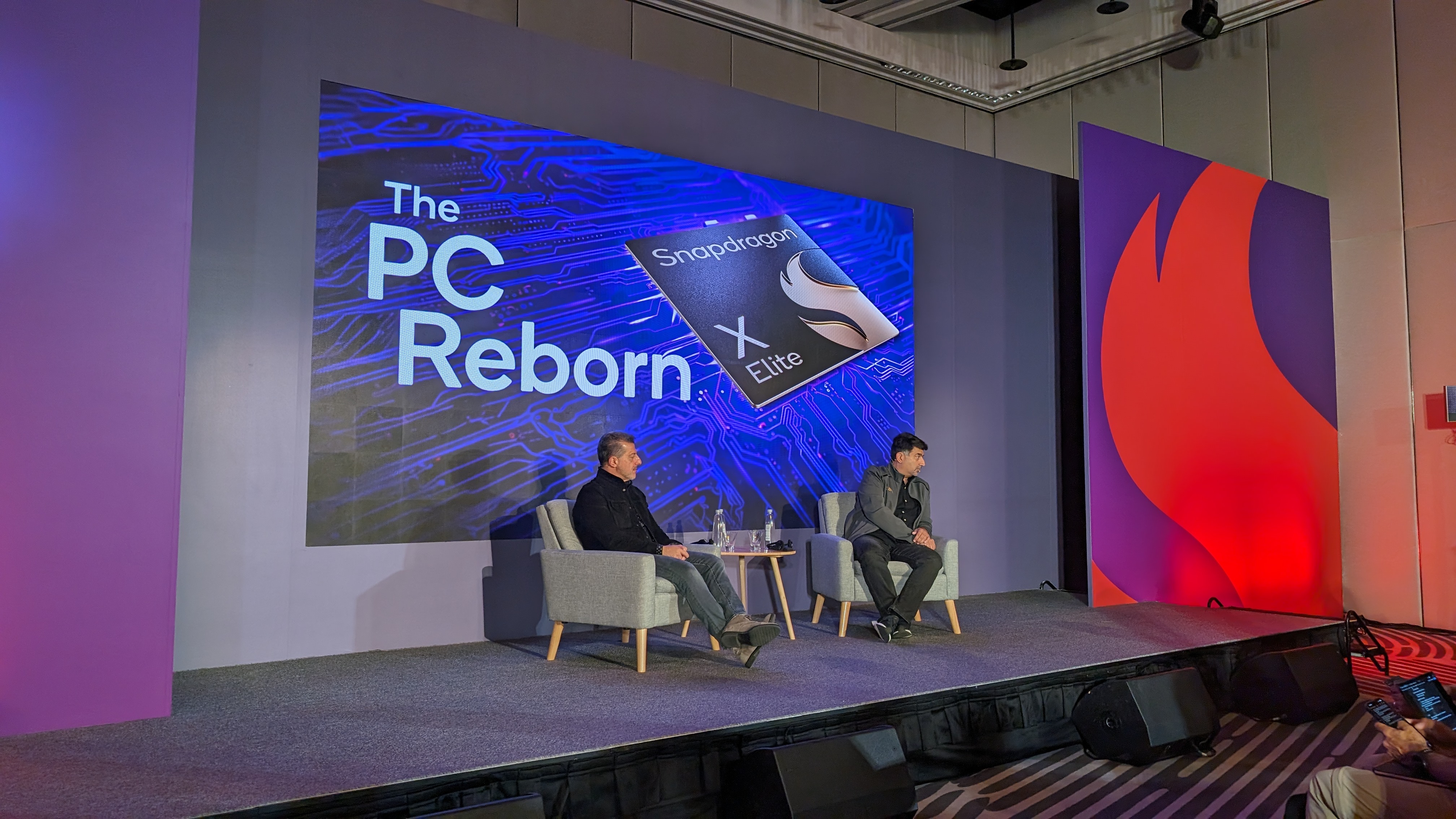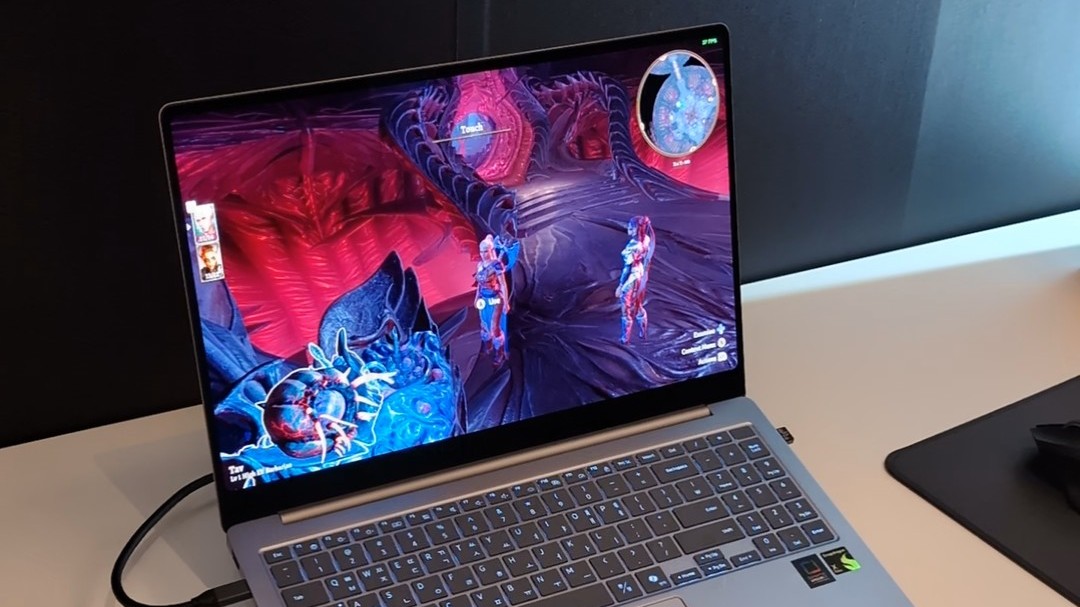I saw a Snapdragon X Elite laptop run Baldur’s Gate in 4K, yet Qualcomm insists it’s 'not a gaming laptop'
All work and no play makes Snapdragon a dull chip

Congratulations, Qualcomm – I’m somehow both very impressed and a little bit confused. I'm in Taipei for the Computex 2024 expo, and I was lucky enough to get some hands-on time with Qualcomm’s upcoming Snapdragon X Elite chip in a whole host of different laptops, all of which were recently unveiled at Microsoft’s ‘AI Era’ event.
Now, Microsoft might have stolen Qualcomm’s thunder a little (since the latter company’s big Computex keynote had nothing new to show off), but it’s always more exciting to actually use new tech like this. Qualcomm was bullish about the power of the X Elite processor, too, telling me to go ahead and push the limits, messing about with video-editing software and various games.
It’s undeniably impressive stuff. While Qualcomm’s main focus right now is artificial intelligence – with the Snapdragon X Elite leading the charge for Microsoft’s powerful Copilot+ AI assistant – I was frankly blown away by the gaming performance of these laptops. I tested out a Samsung Galaxy Book4 Edge (amongst others) and was amazed to see it running Baldur’s Gate 3 at a stable 30-35fps – in 4K!
To game, or not to game?
There are some caveats here – graphical quality was set to Low (although the game still looked great) and the laptop was running AMD’s FSR upscaling software to improve performance. But frankly, if you’re a PC gamer and you’re not using upscaling options at this point, what are you doing? FSR is literally free and works in a ton of games. Dropping the resolution to 1080p saw the framerate uptick to around 45fps. Considering that the Galaxy Book4 Edge is mere millimeters thick and ran silently the whole time, it’s nothing short of incredible.

Here’s the thing, though. After my hands-on session, I participated in an exclusive Q&A session with Qualcomm CEO Cristiano Amon and other executives. Now, I’d already seen Amon talking up the gaming potential of the Snapdragon X Elite platform during the keynote, highlighting that over 1,200 games – mostly big triple-A titles – were already being optimized to run on the new Snapdragon chips.
And yet, during the Q&A, Qualcomm’s senior staff were adamant that gaming is not a focus here.
Work before play
It’s not exactly a surprise that Qualcomm is keen to position these new Snapdragon-powered laptops as productivity machines. After all, they’re the vanguard of Copilot+ PCs, poised to bring AI assistance to every part of the PC ecosystem, whether you’re ready or not. Both Qualcomm and Microsoft have repeatedly emphasized the productivity boost Copilot+ can offer, whether it’s translating video calls in real-time or organizing your calendar.
Get daily insight, inspiration and deals in your inbox
Sign up for breaking news, reviews, opinion, top tech deals, and more.
But here’s the thing: most gamers who aim to play on their laptops don’t want (or simply can’t afford) separate machines for work and play. As a PC gamer myself, I have to shackle myself to my desktop system to play most games, since the delightfully compact HP Spectre x360 that I use as my daily driver can’t play anything beyond the least demanding indie titles. Being able to play my favorite games on a compact ultrabook is the dream, but Qualcomm doesn’t think of itself as the next Nvidia.

Qualcomm SVP Alex Katouzian was part of the Q&A, and when I posed a question regarding the future of gaming on Snapdragon, he was frank about the situation. “The market area we are targeting is more about casual gaming”, he said. “What we’re focused on is productivity.”
There are certainly a lot of people out there who want a work laptop that can also play some games on the side, so it makes sense. But there are also plenty of serious gamers out there who are already playing on low-end hardware, and would probably jump at the chance to get a laptop that can run all the latest titles and could comfortably be used for work and school.
The X Elite is a great chip, but it could be more than that
I’ve long opined that integrated graphics are the future of PC gaming. With Nvidia now far more focused on AI than gaming, dedicated graphics cards could soon be a thing of the past. Don’t be shocked – after all, soundcards bit the dust. Why should graphics cards last forever too?
Katouzian isn’t convinced, though. “High-end gaming is still going to have some hardware associated with it,” he told me when I asked if he could see integrated graphics like the powerful Adreno iGPU in the X Elite chip overtaking discrete GPUs in the future. Qualcomm’s General Manager of Compute and Gaming, Kedar Kondap, also chimed in here.

“We’re being very careful about how we position this type of PC,” Kondap explained. “There are PCs that are consumer-focused, and there are PCs that are aimed at creatives and gamers.” These new ‘AI PCs’ powered by Snapdragon fall firmly into the former camp, it seems.
It’s a bit baffling to me that Qualcomm wouldn’t want to push the (honestly, groundbreaking) gaming capabilities of its new chip, but I can’t deny that there was a certain modesty to both Kondap and Katouzian’s responses throughout the Q&A. Setting reasonable expectations is important; even Amon himself was quite humble away from the glamor of the keynote stage, calling it “very flattering” that competitors are now starting to benchmark themselves against Qualcomm’s chips.
Still, I’m holding out hope that the X Elite chip will lay the groundwork for a future where dedicated graphics cards are no longer needed. Katouzian confirmed in response to a different question that there’s nothing technically preventing users from plugging in an external GPU for more gaming power, but that’s a stop-gap solution and we all know it. I’m envisioning a beautiful future where powerhouse gaming laptops don’t have to be so darn chunky – and I’d like to see Qualcomm commit to leading the way.
You might also like...
- Acer kicks off Computex 2024 with a bunch of nifty monitors, a Wi-Fi 7 toting mesh router – and a really cool 3D camera
- Snapdragon CPUs could be over 50% of Windows PCs by 2029, Qualcomm’s CEO predicts – so should Intel be worried?
- I watched Nvidia's Computex 2024 keynote and it made my blood run cold

Christian is TechRadar’s UK-based Computing Editor. He came to us from Maximum PC magazine, where he fell in love with computer hardware and building PCs. He was a regular fixture amongst our freelance review team before making the jump to TechRadar, and can usually be found drooling over the latest high-end graphics card or gaming laptop before looking at his bank account balance and crying.
Christian is a keen campaigner for LGBTQ+ rights and the owner of a charming rescue dog named Lucy, having adopted her after he beat cancer in 2021. She keeps him fit and healthy through a combination of face-licking and long walks, and only occasionally barks at him to demand treats when he’s trying to work from home.